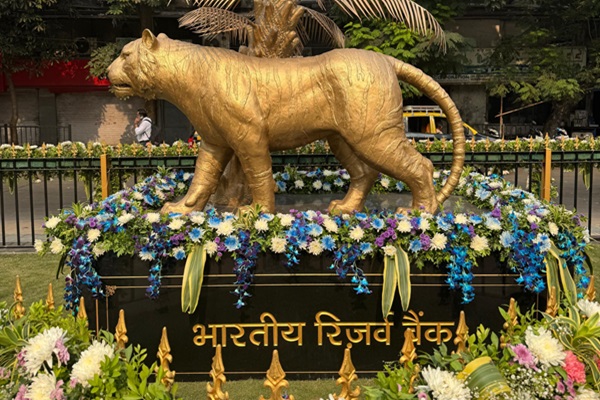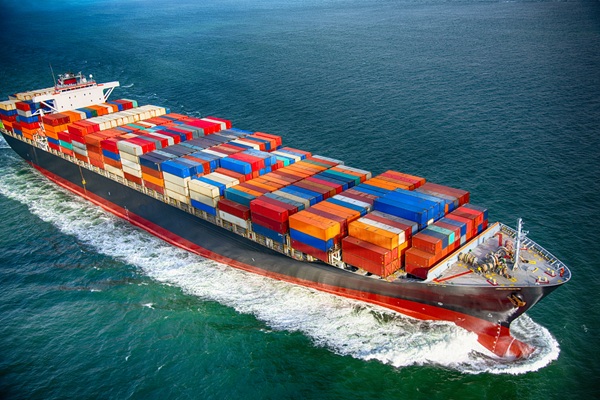.png)
RBI Should Be The Front Soldier After Trump Trade Shock
A seismic tariff shock from the US on April 9 could hijack India’s economic prospects. While this requires a strategic government intervention for risk mitigation, the RBI must be the front soldier to safeguard growth.


Vivek Kumar, an economist at QuantEco Research, focuses on the Indian economy and specialises in the macro-quantitative intersections in the currency and bond markets.
April 6, 2025 at 7:59 AM IST
India’s monetary policy pivoted in February 2025 as concerns over food inflation gave way to comfort. Since then, with high-frequency food prices reassuringly corroborating this, most market participants have priced in a 25-bps rate cut in the upcoming policy review on Apr 9, 2025.
However, on April 9, the same day as the Monetary Policy Committee statement, global trade will undergo a seismic shift. The imposition of discriminatory reciprocal tariffs by the US will come into effect, with as many as 57 countries subjected to a tariff rate ranging between 11% and 50%, with India facing a 26% tariff.
While the tariff announcements were long anticipated, especially after repeated hints from President Trump, market participants had expected the US action to be moderate, anchored in his stated notion of parity in tariff structures. The worse-than-expected outcome, including the possibility of retaliatory actions by US trade partners—China has already made a move, while the European Union is actively considering one—will not just adversely impact the US economy but could have a far-reaching effect of contracting global merchandise trade, which in turn will push the global economy towards a sharp slowdown.
In the last 50 years, the value of world merchandise trade has contracted 13 times. Of these, the global economy slipped into recession twice, while in the other 11 instances, it saw economic growth slowing by 110 bps on average relative to the 3.4% average growth recorded during years of rising trade.
It is possible that Trump merely intends to weaponise tariffs to negotiate and extract favourable bilateral deals for the US. Vietnam, for instance, is reportedly considering offering substantial tariff cuts and other concessions to secure preferential access to the US market. A faster breakthrough of this kind would ease downside risks to global growth. On the other hand, unrelenting posturing by countries could potentially escalate the situation into a full-blown global trade war. This would significantly raise the odds of a global recession.
While India’s merchandise trade intensity—expressed as the ratio of exports and imports to GDP—has moderated from its peak of around 44% in 2011-12 and 2012-13 to roughly 30% in 2024-25, global interlinkages via channels of supply chains, capital flows, financial markets and sentiment remain sizeable. Although there may be some solace in the fact that the proposed tariff hike for India is not as harsh as for some of its Asian peers—China, Vietnam, and Bangladesh will face reciprocal tariffs of 34%, 37% and 46%, respectively—the adverse global spillovers will be hard to escape.
The Indian government has been actively engaging with its US counterparts to forge a Bilateral Trade Agreement before the end of this year. This could offer mutual trade concessions to both nations.
Front Line
In this highly volatile global backdrop, most central banks are likely to prioritise supporting domestic growth. Closer to home, the RBI’s MPC too would be deliberating on some of these known-unknown risks. India’s GDP growth is estimated to have moderated to 6.5% in FY25, lower than its 20-year median of 7.5%.
A disruptive global trade shock at this stage would hinder India’s policy objective of achieving Viksit Bharat status. From a medium-to-long-term perspective, the government must unshackle domestic business constraints and aggressively promote ease of doing business. This would help the Indian industry improve competitiveness while simultaneously boosting trade relations with Europe, Asia, Latin America and Africa.
As per RBI’s estimate from July 2024, India’s neutral policy rate—broadly understood as the repo rate deflated by expected inflation—lies in the 1.4–1.9% range. A near alignment of inflation with its target—the current global trade shock could contribute to this through softer commodity prices—provides the MPC with the flexibility to reduce the repo rate to 5.5% from 6.25% without diluting its commitment to inflation targeting. More importantly, this must be accompanied by ample—not merely adequate—liquidity to maintain accommodative financial conditions and foster credit offtake for both consumption and investment.
A nuanced approach by the RBI would be sagacious at this stage, with recognition that a robust revival of domestic growth drivers must take precedence as long as external trade remains hostage to protectionism in a chaotic global environment. Adjustments in interest rates and the exchange rate should be a policy priority to mitigate known-unknown risks at this juncture.



